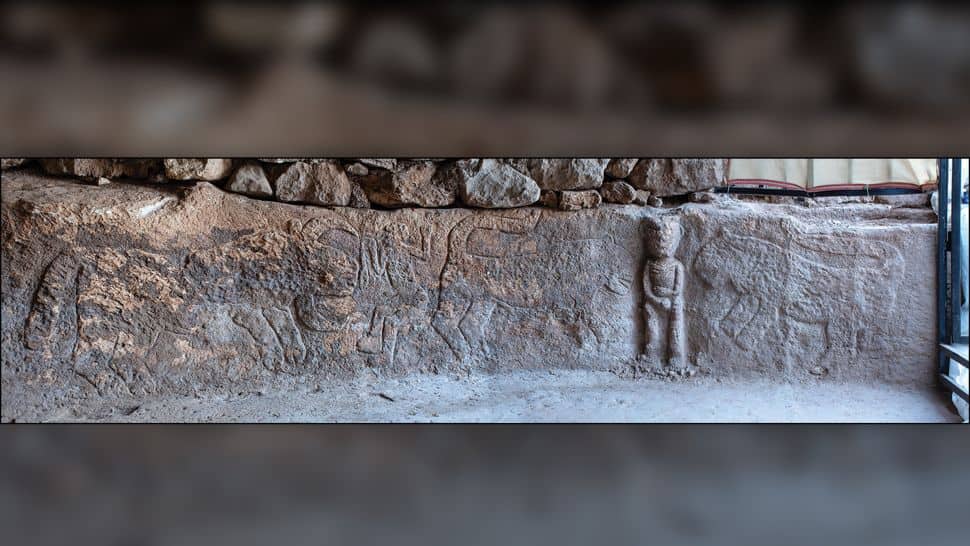A two-panel carving uncovered by archaeologists working in Turkey can lay a claim to being the world’s oldest narrative scene. But while ancient art is often straightforward and to the point, this one is a bit harder to unravel.

The inscription itself is faded, but still visible. It’s essentially a two-panel carving that features humans and animals. The first panel features a squatting male holding a snake (probably) against a bull, while the second panel shows a man surrounded by leopards — and the man is holding his penis. Since the horns of the bull and the teeth of the leopards are accentuated, researchers interpret this as an impending sense of danger, and they interpret the entire scene as a holistic, narrative scene.
“These figures, engraved together to depict a narrative, are the first known examples of such a holistic scene,” explained Eylem Özdoğan, author of the paper and archaeologist at Istanbul University, in a statement. “This was a picture of the stories that formed the ideology of the people of that period.”

It’s not clear why the man was holding his penis. The penis itself is the only thing offering some information regarding the sex of the man (and the animals — one leopard has a penis, the other doesn’t), but it’s unlikely that this is only a sex identification thing.
The emphasis of the artwork seems to be the connection between the human and the natural world; at a time when humans were transitioning to a more sedentary lifestyle and were perhaps feeling increasingly separated from nature.
The archaeologist also interprets it as a progressive narrative structure.
“This scene has the narrative integrity of both a theme and a story, in contrast to other contemporaneous images
and represents the most detailed depiction of a Neolithic ‘story’ found to date in the Near East, bringing us closer to the Neolithic people and their world,” study author Eylem Özdoğan writes in the article.
Özdoğan suspects that the depicted figures were likely historical or mythical characters or characters mentioned in traditions that people would have been familiar with — though it’s not clear exactly who these characters were. So while this isn’t the oldest artistic product (and not by a long shot), the researchers believe this is the oldest known artwork that aims to tell a narrative story.
This type of art would have marked a turning point in our ancestors’ evolution. While they shifted from a hunter-gatherer lifestyle to a more stable and sedentary type of society, carvings, and wall paintings would have become a new form of storytelling, a connection point from one person to the other, and potentially, from one generation to the other. Stories, myths, legends, and even the core values of society would have been kept alive through this type of art.
The artwork was found at Sayburc, in Turkey. The ancient city comprises a Neolithic mound, some 60 km east of the Euphrates River, that was mostly covered by the construction of a modern village in 1949. It’s likely that the village also covers several other important archaeological structures.
Excavation at the site only began in 2021, and has already revealed several Neolithic occupations. The relief was found in a communal building that measures 11 meters in diameter (36 feet). The Sayburç reliefs, Özdoğan offers, are broadly speaking, “the reflection of a collective memory that kept the values of its community alive.”
This is unlikely to have been the absolute earliest art of this type. Several other cultures, both in the area and in other places, appear to have been equally advanced, and may have likely created similar representations — it’s just that we haven’t found them yet.
The study was published in the journal Antiquity.









